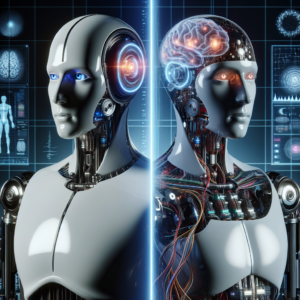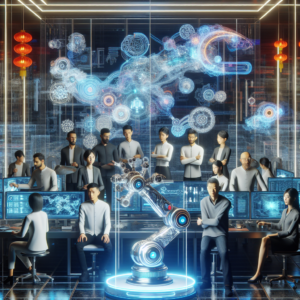AI Detects an Unusual Detail Hidden in a Famous Raphael Masterpiece
In the world of art, each brushstroke can hold secrets that transcend time, revealing hidden narratives that enhance the viewer’s experience. Recently, a groundbreaking discovery was made using artificial intelligence (AI) that has illuminated a previously unnoticed detail in a renowned masterpiece by the legendary artist Raphael. This development not only underscores the potential of technology in art conservation and analysis but also invites us to reconsider how we engage with classical works.
The Raphael Masterpiece: A Brief Overview
Raphael, one of the great masters of the Renaissance, is celebrated for his exquisite use of color, composition, and emotional expression. His works are often imbued with symbolism and meticulous detail. One of his most famous paintings, *The School of Athens*, serves as a prime example of his genius, depicting a gathering of great philosophers and scholars from various eras. The complexity of this artwork is such that even centuries later, art historians and enthusiasts continue to uncover layers of meaning within it.
The Role of AI in Art Analysis
The intersection of technology and art has sparked a revolution in how we analyze and preserve works of art. AI, particularly through machine learning algorithms, has shown immense potential in recognizing patterns that the human eye may overlook. By processing vast amounts of data and contrasting them with established art historical context, AI can assist in revealing details that might otherwise remain concealed.
Recent advancements in image recognition technology have made it possible for AI to analyze paintings pixel by pixel, assessing minute details that are often lost in the broader visual context. This capability was crucial for uncovering the unusual detail hidden within Raphael’s masterpiece.
The Discovery: What Was Revealed?
The AI analysis of Raphael’s work unveiled an intriguing detail—a hidden figure that had been overlooked by even the most seasoned art historians. This figure, which appears subtly in the background of the painting, adds a new layer of interpretation to the scene, suggesting a deeper narrative that Raphael may have intended for his audience.
What does this mean for the interpretation of the painting? Here are some key takeaways:
1. Enhanced Understanding: The discovery gives art historians and enthusiasts a fresh perspective on Raphael’s intentions and the complexities of the scene he crafted.
2. New Narratives: The hidden figure opens up discussions about symbolism and the role of background characters in Renaissance art, which often serve to elevate the central themes.
3. Reevaluation of Techniques: This incident prompts a reevaluation of Raphael’s techniques and methods, potentially leading to new insights into his artistic process.
4. Broader Impact on Art Preservation: The successful use of AI in detecting hidden details demonstrates its potential in art preservation, restoration, and education.
The Importance of Collaboration
The collaboration between art historians and AI researchers highlights the importance of interdisciplinary approaches in art analysis. By merging the expertise of art historians with the computational power of AI, new avenues for exploration emerge. This synergy not only enhances our understanding of historical art but also paves the way for future innovations in the field.
Through such collaborations, researchers can develop more sophisticated algorithms that are tailored to recognize the nuances of artistic style and technique, further enriching the discourse surrounding classic and contemporary artworks.
Implications for Future Art Research
The implications of this discovery extend beyond just Raphael’s work and have the potential to affect the entire field of art research. As AI continues to evolve, its applications in art can lead to:
– Increased Accessibility: More detailed studies can be made accessible to the public, allowing art lovers worldwide to engage with works on a deeper level.
– Educational Tools: AI can create educational tools that help students understand the complexities of art history, encouraging a more profound appreciation for the subject.
– Preservation Techniques: The technology can assist in the preservation of artworks by helping conservators identify areas that require attention, ensuring that these masterpieces endure for future generations.
Conclusion: A New Era of Art Appreciation
The intersection of AI and art is ushering in a new era of appreciation and understanding. The discovery of the hidden figure in Raphael’s masterpiece exemplifies the potential of technology to enhance our engagement with art and to reveal truths that have remained shrouded in mystery for centuries.
As we continue to explore the capabilities of AI in art analysis, we can expect to uncover more hidden gems within the annals of art history. The blending of traditional art scholarship with modern technology invites a renewed engagement with the classics, encouraging us to look closer, think deeper, and appreciate the beauty of art in all its complexity.
In conclusion, the revelation of this unusual detail in Raphael’s work not only enriches our understanding of the painting itself but also signifies a transformative moment in the way we perceive and interact with art. It serves as a reminder that even the most celebrated masterpieces can hold secrets waiting to be uncovered, offering endless possibilities for exploration in the realm of art history.



